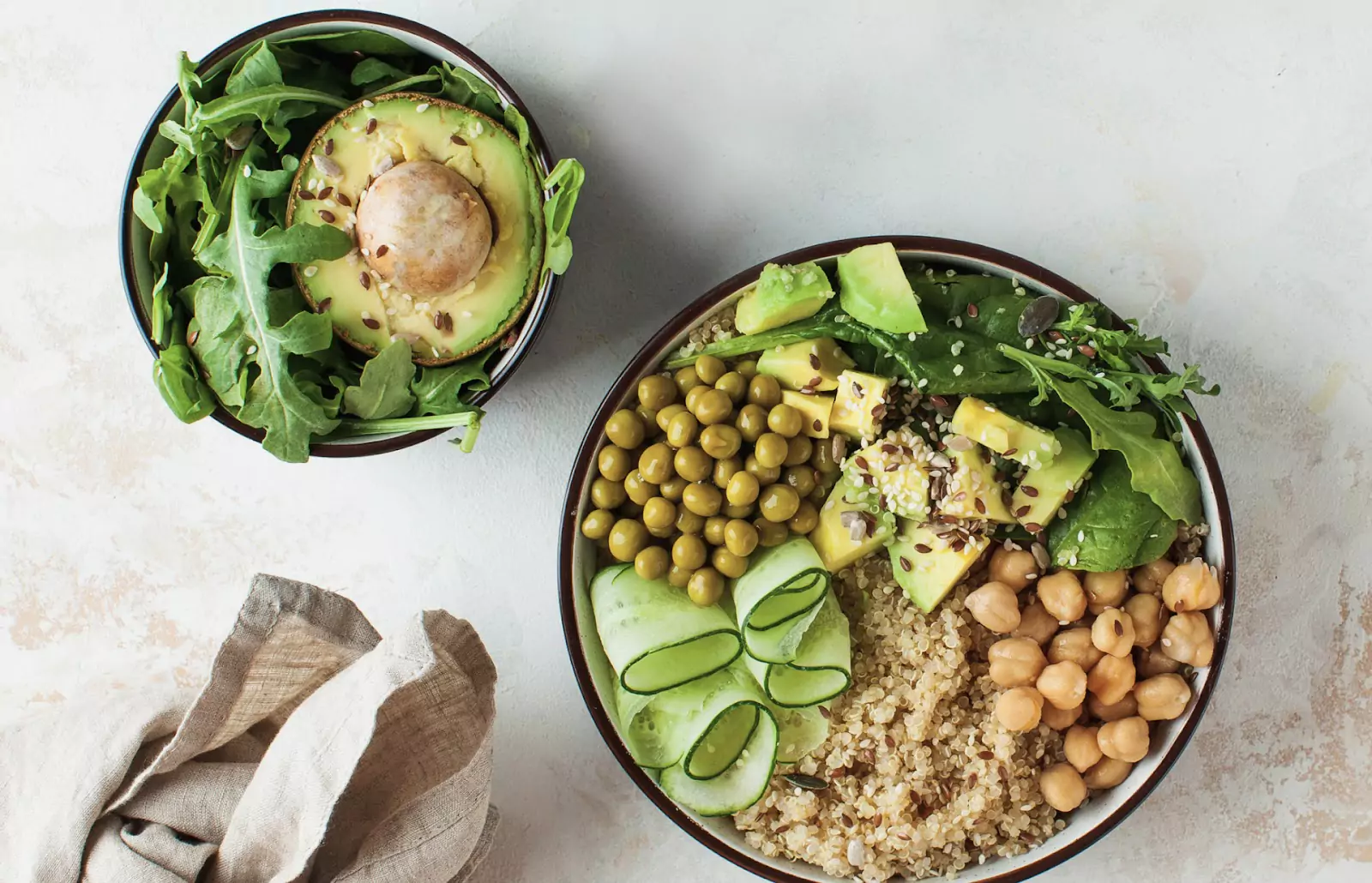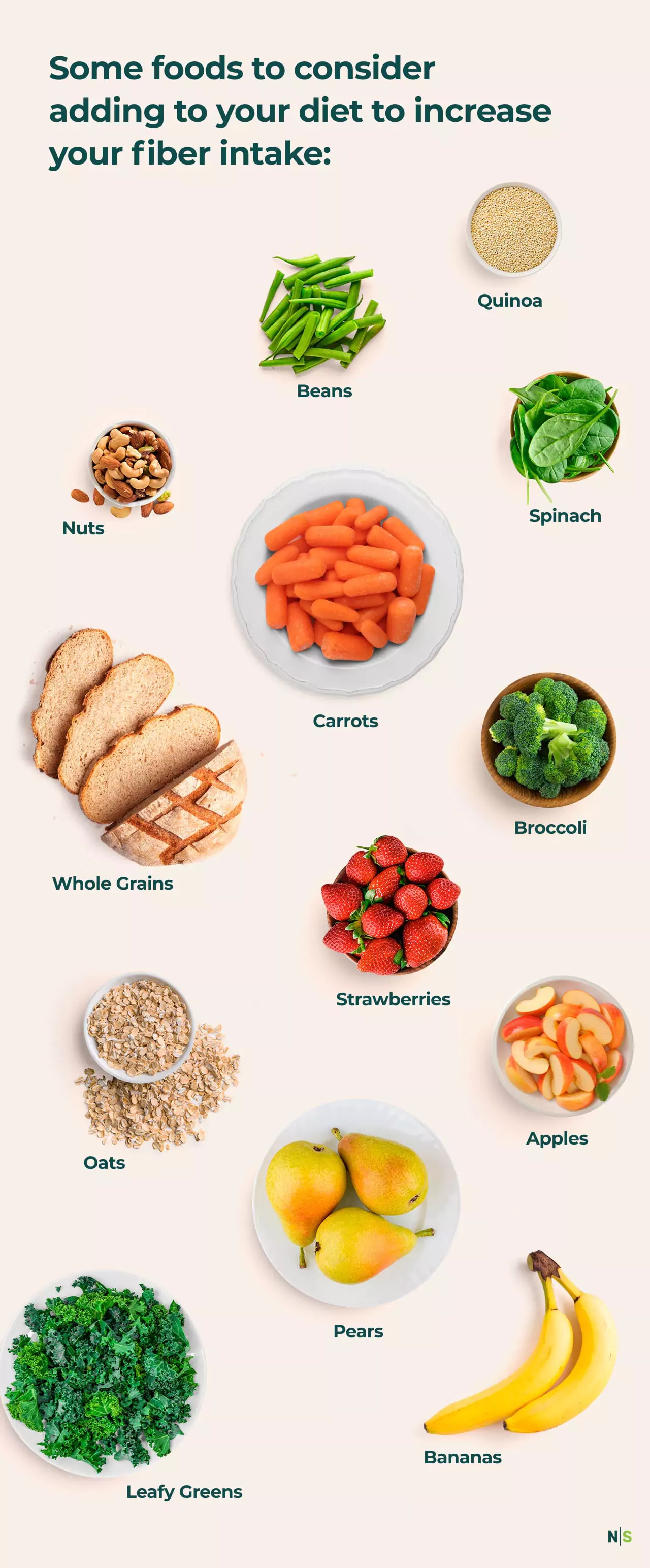
Key Takeways
What do whole fruits, raw vegetables, whole-grain cereals, and brown rice have in common? They’re all excellent sources of dietary fiber, a type of carbohydrate you should consider adding to your diet if you haven’t already. Dietary fiber is the part of fruits, grains, and vegetables that your body can’t break down and digest.
Confused? Here's a quick explanation: While your body can digest the rest of your food and absorb it for nutrients, fiber remains relatively intact as it works its way through your stomach, intestines, and finally, colon. This sounds like a bad thing, but it isn’t! Here's more about dietary fiber and why you should include it in your diet.
First, Why is Fiber so Important?

Technically speaking, fiber is a carbohydrate. But there’s a twist. While most other carbohydrates break down into sugar molecules, fiber does not. As you digest your food, fiber adds mass and weight to your stool, making it easier to pass and preventing constipation.
It does this by drawing water into the stool and allowing for it to pass through the intestines quickly. It’s a key ingredient in maintaining good gut health, and it helps your body regulate blood sugar. But that’s not all! There are other health benefits of fiber that help make it an essential part of a healthy diet.
Here are a few different ways it can help:
1) It May Help You Maintain a Healthy Weight
Because high-fiber foods promote satiety, you may find yourself feeling full for longer after you eat them. This can help decrease the urge to snack as much as you would without a high-fiber diet. Additionally, fiber helps keep your digestive tract regular and moving, reducing the chance of buildup in your gut.
2) It Can Help Keep You Regular
Fiber adds mass to your stool while also attracting water to make it easier for your body to pass waste.
3) It Enriches Your Nutrient Uptake
Fiber-rich diets slow down your digestion. This gives your body more time to break down foods and absorb the nutrients you consume.
4) It Can Reduce The Risk of Colon Cancer
Keeping your colon clear reduces the risk of food sitting around and becoming toxic in your gut. This can decrease the risk of colorectal cancer in some people.
5) You May Have a Lower Risk of Hemorrhoids
When fiber bonds with water and other nutrients in your digestive system, it also results in softer stool. This can help reduce the risk of hemorrhoids as well as limit the exacerbation of any existing hemorrhoids.
6) It May Lower Cholesterol
Soluble fiber can be responsible for lowering low-density lipoproteins that you ingest. Because of this, it can lower cholesterol levels in some people.
7) It May Boost Your Heart Health
Fiber-rich diets may potentially lower inflammation and blood pressure, resulting in a happy heart and [hopefully] a longer life.
8) You May Have a Reduced Risk of Type 2 Diabetes
Soluble fiber reduces sugar absorption while digesting and breaking down food. Fiber content can also decrease the glycemic index in foods. Research shows that all of this means eating fiber can help improve blood glucose control among some people with type 2 diabetes.
9) It May Reduce the Risk of Breast Cancer
Research from The American Academy of Pediatrics shows that women who have had diets high in fiber for most of their life run a lower risk of developing breast cancer.
While research is ongoing and there’s no one-size-fits-all when it comes to diet and nutrition, it’s safe to say that fiber has its fair share of benefits. It can help maintain a healthy weight by promoting your feelings of fullness and keeping your gut healthy, lowering cholesterol levels, and reducing your risk factors for heart disease, obesity, and diabetes.
So, what’s not to love?! Although you need to balance fiber intake with a healthy routine and good lifestyle choices, there are many benefits to adding fiber into your diet.
Soluble Fiber vs. Insoluble Fiber

Fiber is classified into two different groups: soluble fiber and insoluble fiber. Soluble fiber is a fiber that dissolves in water and turns into a gel. Insoluble fiber is—you guessed it—a fiber that doesn’t dissolve in water. Here’s a little more about each type:
Soluble Fiber
Soluble fiber is made of plant gums and plant pectin. It is the fiber that helps control blood glucose levels and may reduce your risk of developing diabetes. It also nurtures the good bacteria that dwell in your gut, promoting healthier stool.
By binding itself to cholesterol in the small intestine and lowering the amount of low-density lipoprotein (the source of bad cholesterol), it may also help lower cholesterol levels. The reason it’s usually brought up in conversations revolving around weight loss is that it can help you feel full for longer, preventing you from overeating. Some foods with soluble fiber include:
- Oats
- Lentils
- Barley
- Fruit like apples and strawberries
Insoluble Fiber
Insoluble fiber is made of plant hemicellulose and cellulose. It is also known to reduce your risk for diabetes. This type of fiber helps increase the movement of stool through your digestive tract by adding mass and attracting water to it.
It’s also what helps people with digestive irregularity or constipation. Some foods with insoluble fiber include:
- Wheat bran
- Vegetables like broccoli and carrots
- Potatoes
- Nuts like almonds and peanuts
How Does Fiber Affect Blood Sugar Levels?

Fiber is the ultimate efficiency tool. It actually slows down the digestive process, giving your body more time to extract nutrients as you digest your food. Since it slows down your digestion, it can reduce blood sugar spikes after eating.
Fiber also helps you feel fuller faster and stay feeling full for longer. This means you end up eating less and may even have an easier time curbing sugar cravings as fiber becomes part of your daily diet.
As fiber moves through your digestive tract, it plays a couple of roles. It can bind with compounds like cholesterol and sugars to block them from being absorbed. It also slows down your digestive process, which can lead to a slower release of digested sugar into your bloodstream, resulting in a more stable and lower blood sugar level.
Can Fiber Help with the Symptoms of Type 2 Diabetes?
According to the CDC, approximately 100 million people in the United States of America have diabetes or prediabetes, and one in three people have high blood pressure. Both conditions can worsen your chances of developing cardiovascular diseases as you age.
The good news is that new research suggests fiber-rich foods can help with some diabetes care. Conducted at the American College of Cardiology, the study shows that people with a high fiber diet may have a significantly lower chance of developing type 2 diabetes.
How Can I Tell How Much Fiber I Really Need?

Are you getting too little fiber? What about too much fiber? Again, there’s no one-size-fits-all, but there’s an average daily intake that you can consider. The Mayo Clinic recommends women consume 21 to 25 grams of fiber every day, and men consume 30 to 38 grams a day.
Everyone’s body and needs are different, though, and it is vital to understand your unique needs when changing your diet. Working with a registered dietitian is an excellent way to get the guidance you need to make changes.
How to Add More Fiber to Your Diet

Now that you understand the health benefits of a high-fiber diet, you may be asking what such a diet looks like and how you can add fiber to yours. Adding fiber to your diet isn’t difficult. It can be done in many ways, making it easy to transition into a healthier lifestyle.
The first thing to remember when changing your diet in any form is to take it slow. Don’t shock your body by completely changing up what it is used to. This can have adverse effects on your health and may even cause bloating, gas and cramping.
Before adding high-fiber foods into your existing diet, consider examining the amount of processed food you consume daily. Most processed foods are stripped of their fiber content unless it’s added in. If your diet contains a lot of processed foods or added sugars, you’re probably not consuming the right type or amount of fiber.
It’s a good idea to start by reading the labels on your foods to find the fiber on the nutrient labels. You may be surprised to learn how much or how little is in your go-to foods!
Remember not to make any significant changes without monitoring what a healthy diet looks like for your individual needs and consulting with a professional (like a registered dietitian) first.

Remember that some people don’t tolerate all high-fiber vegetables or grains as well as others. So it’s essential not to use a one-size-fits-all approach when you’re adding fiber into your diet. If your body handles these options well, they can be a healthy way to add micronutrients and fiber to your diet.
Also, consider including some non-starchy vegetables, like asparagus, baby corn, and bean sprouts. It’s a good idea to work with a registered dietitian to see what your body responds best to.
Find the right Nutrisense programto turn insight into progress.
Go Beyond Glucose Data with Nutrisense
Your glucose can significantly impact how your body feels and functions. That’s why stable levels are an important factor in supporting overall wellbeing. But viewing glucose isn't enough. Nutrisense, you’ll be able to learn how to use your body's data to make informed lifestyle choices that support healthy living.
Sign up for insurance-covered video calls to work with a glucose expert: a personal registered dietitian or certified nutritionist who will help tailor your lifestyle and diet to your goals.
With the Nutrisense CGM Program, you can monitor your glucose with health tech like glucose biosensors and continuous glucose monitor (CGM)s, and analyze the trends over time with the Nutrisense App. This will help you make the most informed choices about the foods you consume and their impact on your health.
Ready to take the first step? Start with our quiz to find the right Nutrisense program to help you take control.

Kara Collier is a registered dietitian nutritionist and certified nutrition support clinician who is passionate about reshaping how we approach prevention, behavior change, and metabolic health. A Forbes 30 Under 30 honoree, she’s helped over 150,000 people improve their metabolic health using tools like continuous glucose monitors and behavior-focused nutrition strategies. Kara has been featured by Forbes, UC Berkeley, and HLTH, and has appeared on top podcasts like Mind Pump and The Genius Life.




